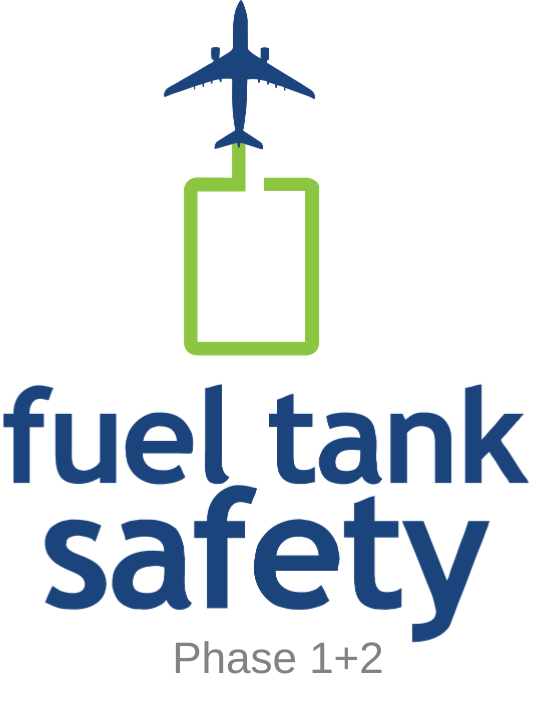Fuel Tank Safety (Phase 1+2) Initial Training
TRAINING TYPE
Fuel tank safety - video presentation with voice over (pre-recorded, self-paced)
TIME REQUIRED
At least 5 hours 1 minute
Equivalent of 8 hours of classroom training.
ABOUT THE COURSE
FTS (phase 1+2) aviation online training program will include a short background, showing examples of the FTS accidents and incidents, the description of concept of fuel tank safety and Critical Design Configuration Control Limitations (CDCCL).
The examples of manufacturer's documents showing the CDCCL items, the cases of FTS defects, as well as the examples for maintenance instructions for inspection.
OBJECTIVES
The attendant should, after the completion of the training:
- Have knowledge of the history of events related to fuel tank safety issues and the theoretical and practical elements of the subject;
- Have an overview of the regulations known as SFAR (Special FAR) 88 of the FAA and of JAA Temporary Guidance Leaflet TGL 47;
- Be able to give a detailed description of the concept of fuel tank system ALI (including Critical Design Configuration Control Limitations CDCCL;
- Be able to identify the components or parts or the aircraft subject to FTS from the manufacturer’s documentation;
- Be able to plan the action or apply a Service Bulletin and an Airworthiness Directive.
TARGET GROUP
FTS (phase 1+2) required for:
- Personnel, which is involved in planning, performing, supervising, inspecting and certifying the maintenance of aircraft and its fuel system components.
- Personnel involved in the aviation maintenance in accordance with Appendix IV to AMC to 145.A.30 (e)
- Personnel of the Part-145 organization required to plan, perform supervise, inspect and certify the maintenance of aircraft and fuel system components;
- Personnel of the Part-CAMO organization involved in the management and review of the continuing airworthiness of aircraft
- Personnel of the part 147 organization authorized to instruct on maintenance inspecting and certifying the maintenance of aircraft and its fuel system components.
BENEFITS
- Flexible: it's a pre-recorded self-paced course
- Demo version preview
- Technical Support
- Cost-effective
- Online training certificate issued by EASA Part-147 approved Maintenance Training Organization (MTO)
NECESSARY CONDITIONS
- Internet access
- Fluent technical aviation English language
PREREQUISITES
Familiarity with relevant regulations.
GROUP SIZE
Unlimited size for online training
EXAMINATION
- During the course, interactive questions are asked to make sure that students understand the course material
- Multi choice questions examination after 100% completion of the course. Pass mark – 75%;
- 1 re-examination possible after 24 hours (if both attempts failed, full course has to be completed again).
COMPLETION
Upon successful completion of the training course (100%), participants will receive an Online Training Certificate issued by FL Technics, which is an EASA Part-147 approved Maintenance Training Organization (MTO).
FL Technics is approved to the requirements of:
- Part-147 under approval reference No LT.147.001 Part-145 under approval reference LT.145.011
- Part-CAMO under approval reference No LT.CAMO.0015
- Part-21 under approval reference EASA.21J.496 and LT.21G.0004
- ISO 9001:2015 and ISO 14001:2015
NOTE
- For private accounts: purchased FLT (phase 1+2) online training course can be activated within the 6 months past the purchase date. Once the course is activated it must be completed within the period of 2 months.
- For corporate accounts: purchased FLT (phase 1+2) online training course can be activated within the 1 year past the purchase date. Once the course is activated it must be completed within the period of 2 months.
CONTENT
- Introduction
- The theoretical background behind the risk of fuel tank safety, concepts to prevent explosions
- The major accidents related to fuel tank systems
- The requirements of SFAR 88 of the FAA and JAA Interim Policy INT POL 25/12
- The results of SFAR 88 of the FAA and JAA INT/POL 25/12
- Flammability Reduction Means
- Airworthiness Limitations and CDCCL in the context of maintenance data
- CDCCL Controlling and Recording
- Fuel Tank Safety during maintenance
- Examples of defects and the associated repairs as required by the TC / STC holder’s maintenance data
- Summary
YOU MIGHT ALSO BE INTERESTED IN
Fuel Tank Safety (Continuation)
Initial Package: (HF145 + FTS2 + EWIS3-8)
Essential package: (HF145 + FTS2 + EWIS1-2)
Starter package: (HF based on part 66 - module 9 + FTS2 + EWIS1-2)
Fuel Tank Safety (Phase 1+2) Initial Training

